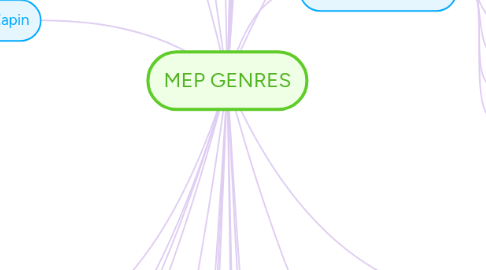MEP GENRES
by Calista Tan


1. Gigue
1.1. compound quadruple
1.2. very fast
1.3. anacrusis
2. Zapin
2.1. Marwas, gambus
2.2. Taksim
2.2.1. solo improvisatory passage
2.2.2. free meter
2.2.3. no drums
2.3. Melodic phrases
2.3.1. Kopak
2.3.1.1. drums more prominent and virtuosic
2.4. Tahtim
2.4.1. climax of piece
2.4.2. drums more prominent
2.5. For royalty/entertainment
2.6. More instrument focussed
2.7. Malaysia
3. Joget
3.1. Malaysia
3.2. revolves around I IV V
3.3. repetitive
3.4. no structure
3.5. For celebratory dances
4. Marzurka
4.1. emphasis on 2nd or 3rd beat
4.2. irregular tempo
4.3. triple time
5. Etude
5.1. technically virtuosic
6. Nocturne
6.1. night-feel
6.2. expressive
6.3. broken chords
7. Hindustani
7.1. Tabla
7.2. Sitar, Sarod, Sarangi
7.3. Tambura, drone box
7.4. North India
7.5. Violin
7.6. Voice
7.7. Alap
7.8. Gat
8. Carnatic
8.1. South India
8.2. Mridangam
8.3. Vina
8.4. Tambura, drone box
8.5. Violin
8.6. Voice
8.7. Alapana
8.8. Kriti
9. Concerto Solo
9.1. Solo
9.2. Tutti
10. Sonata Da Camera
10.1. Harpsichord
10.2. Cello
10.3. Dance characteristics
10.4. Chamber music
11. Sonata Da Chiesa
11.1. Church
11.2. Organ
11.3. Cello
12. Allemande
12.1. simple quadruple
12.2. anacrusis
12.3. moderate
12.4. stately
13. Polonaise
13.1. stately
13.2. regular tempo
13.3. lively
13.4. fast
13.5. chordal
14. Waltz
14.1. prominent triple time
14.2. moderate tempo
14.3. lyrical
14.4. elegant
15. Sarabande
15.1. triple time
15.2. slow
15.3. emphasis on 2nd beat
16. Courante
16.1. moderately fast
16.2. triple time
16.3. anacrusis
17. Jiangnan Sizhu
17.1. Shanghai, China
17.2. Dizi
17.3. Yangqin
17.4. Pipa
17.5. Muyu
17.6. Ban
17.7. For amateur gatherings
17.7.1. Tea houses
17.8. Erhu
18. Guangdong Hanyue
18.1. Guangdong, China
18.2. For performances
18.2.1. Cantonese Opera
18.3. Xiao
18.4. Tihu
18.5. Yueqin
18.6. Guzheng
18.7. Yangqin
18.8. Pipa
19. Javanese Gamelan
19.1. For royalty
19.2. Saron, Slenthem, Gender, Peking
19.2.1. Balungan
19.3. Kethuk, Kenong
19.3.1. Time keep
19.4. Java, Indonesia
19.5. Less lively
19.6. Bonang
19.6.1. elaboration
19.7. Kendang
19.7.1. drums
19.8. Gongs
19.8.1. Gong cycles
19.9. Polyphonic Stratification
20. Balinese Gamelan
20.1. Bali, Indonesia
20.2. For entertainment
20.2.1. Wayang Kulit
20.3. More lively
20.4. Ceng ceng
20.5. Gangsa, Ugal
20.5.1. Pokok
20.6. Reyong, Trompong
20.6.1. elaboration
20.7. Kendang
20.7.1. Rhythmic accompaniment
20.8. Kempli
20.8.1. Time keeper
20.9. Gongs
20.9.1. Gong cycles

